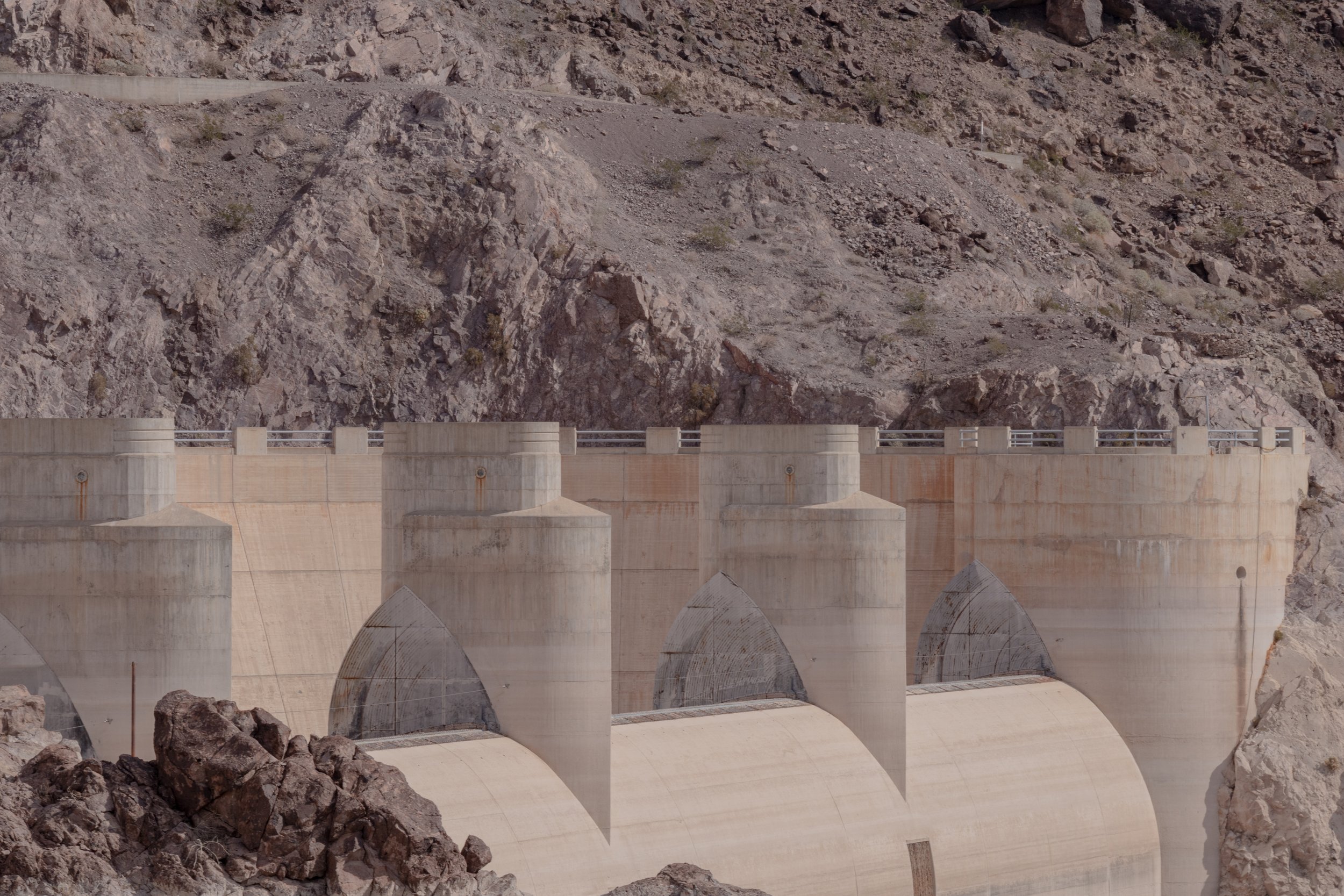The Las Vegas Issue
Dry As Hell
How Vegas gets its water against all odds and what it means
Vegas is an impossible city.
To put it frankly, it shouldn’t exist. The road to Vegas feels unreal — rolling, green California landscapes lose altitude and all traces of moisture until only husky Joshua trees, stubborn cacti, and miles of dust are all that remain. Then suddenly, greeted by a light-up “Welcome to Las Vegas” sign, you enter the bright, bountiful, irresponsibly developed Sin City.
Over 1.5 million people live in and around Las Vegas, in the middle of the damn Mojave Desert, while almost 40 million people visit annually to indulge. Innumerable and enormous casinos, wellstocked resorts, and entire themed districts — if you can think of it, it probably exists in Vegas. Fine dining? Check. Rooftop pools? Check. A TV the size of an entire floor? Checkity check.
Driven by human desire, it is no wonder that Vegas has grown to be the behemoth that it is. Throughout this growth, the region has boasted a stunning dryness — but money can make anything happen, and money is the lifeblood of the city, making life happen when rain can’t.
Vegas receives just over four inches of rain a year, while the US average is 38. So in mapping the hydrating arteries of the city, one has to examine the area around Nevada to understand where all the water originates. One inward flow is Nevada’s supply of groundwater, which Vegas sips from. Another is the Colorado River, which Vegas absolutely gulps from, by way of the architectural phenomena Lake Mead and the Hoover Dam on the Nevada-Arizona border
There wasn’t enough water in the area for people to populate it, so we changed the entire surrounding landscape with a dam. As of September, Lake Mead was at its lowest capacity on record, at under 27%. While some of the blame can be placed on lower-than-average rains, this dryness is also fed by the insistent demand from Las Vegas’ thirsty patrons.
Water-wise, Lake Mead has historically held a peak of 9.3 trillion gallons. But today, the lake looks more like a mostly-drained bathtub with a clearly rust-stained waterline. Dryness dominates the top of the lake, creating a border that makes one’s throat itch. Cracked earth and desolate brown canyons characterize the area around the sad man-made pool. Old docks float on earth, the lasting memory of years with plentiful rain. They likely will never float on water again.
After a blisteringly lengthy summer, Clark County, which contains Vegas, is in severe drought. You almost wouldn’t know it, though, if you were walking the streets of the city. In the terraformed city of sin, the show must go on.
The 22 million gallons in the Bellagio fountain are still musically sprayed about every half-hour. The Roman-esque canals of The Venetian are still full enough for touristy gondola boats to sail down.
The estimated 200,000 swimming pools in Las Vegas are still topped up, although now Clark County has graciously limited their sizes, so they can’t be bigger than three garages put together.
According to the City of Las Vegas website, the metropolis is “recognized as a national leader in environmental sustainability,” including water conservation and remarkable water recycling systems that recovers about 40% of water used in Vegas’ hotels. This is undoubtedly, impressively true — if you’re going to build an adult playground in the desert, you better at least be efficient with your environmental transgressions.
Yet in the long run, summers will only get drier; rains will only get sparser. But Las Vegas isn’t going anywhere, no way no how. Its economy is too big, its staff is too large, its sprawl is too uncontained to be budged.
But the fact of the matter is that Vegas shouldn’t exist. Tips like taking shorter showers or only using a fully loaded dishwasher can only do so much. The Las Vegas real estate market is booming, with new communities in development around all of its existing suburbs. Whether the environment is able to support them or not, Vegas appeals to the people and the people will keep coming.
And people will keep coming because we’re greedy. We’re greedy, and we want what’s best for ourselves and our families. The average Vegas resident is thinking about paying their rent, buying their groceries, maybe a night out. In the whirl of our daily lives, we don’t have the time, the energy, or the environmental selflessness to think about where the water we’re drinking comes from.
None of this is immoral or illogical. We want not just to survive but to really live our lives, experience everything we can and give as many opportunities as possible to our loved ones. None of that is wrong, and none of it can be stopped.
There’s nothing that one article in an indie travel publication can do to change how the world thinks about Las Vegas. But the least we can do is draw attention to things that have repercussions not just on us, but on everything in the environments around us, so that we can still live our damn lives.
Words: Kat Shok
Photos: James Nguyen, Niko Frost





